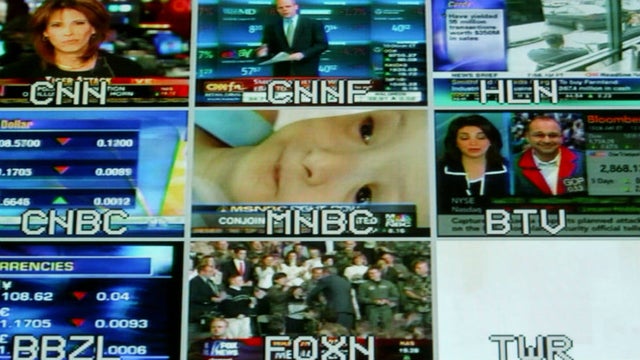© Getty Images
BY STEVE LANZANO
Source: thehill.com, May 2019
The 2020 Democratic primary field is historically crowded — from private sector leaders, to small-town mayors, U.S. Senators and more; there are more candidates seeking the nomination than ever before.
This month, qualifying candidates will be looking for a breakout moment in the first Democratic primary debates on June 26 and 27. With such a historically large primary field, it won’t be easy.
There are 20 spots available in the debates, and 24 Democratic candidates are currently running, with more potentially joining the race. Not everyone will succeed, and candidates that do qualify will be looking to make a strong impression on voters.
There’s no better way to reach the most voters than with TV; it’s why the debates are so influential for candidates.
Studies have shown that TV is the most important medium to voters when it comes to awareness of a candidate, and the most important when it actually comes to motivating them to vote.
But, just like the current Democratic field, 2020 promises to be unique. For a better sense of how voters are influenced and motivated to vote in the upcoming primaries and the presidential election we should turn to the three states which are holding gubernatorial elections this year. We can look to them for indicators as to how voters are influenced and motivated by different media.
Kentucky, Mississippi and Louisiana are each holding state-wide elections in 2019. I visited each state this spring, meeting with political operatives and grassroots organizations.
We conducted research in each state in January, finding that in Kentucky, Mississippi and Louisiana, TV reaches the most voters. This complements the research we did across 10 states following the 2018 midterms where, again, TV reached the most voters, and sixty-six percent of the respondents cited TV as motivating them to get out and vote.
Most importantly, though, we learned that voters trust the information they find on local broadcast TV. In such a crowded field, candidates will not only battle for reach and attention, but must also contend with broader headwinds, such as skepticism and concerns over fake news and news veracity.
Trust, then, is essential to ensuring or gaining support.
Eighty-five percent of Kentucky voters, 83 percent of Mississippi voters and 81 percent of Louisiana voters “trust the news they hear/see” on local broadcast TV, more than any other medium.
Accordingly, it’s confirmed that the first Democratic primary debate of the 2020 election will be broadcast by NBC, MSNBC and Telemundo, meaning most debate viewers will watch a local broadcast station. This is all the more reason for Democratic candidates to ramp up their campaign efforts through local TV to secure a spot in the highly-coveted debate.
This trust isn’t solely about the information voters get on local broadcast TV, but also what’s not on it.
Campaign managers or candidates with itching Twitter fingers should note that a majority of those polled said they thought “Fake News” was most prevalent on social media. Not surprising; social media also ranked last in all three states with regard to trust.
But why does this matter to campaigns? We’ve seen reports from national outlets about the falling trust in news and rising mistrust in our elected officials. In this environment, campaigns everywhere, not just in Kentucky, Mississippi, and Louisiana, need to ensure they reach these voters, and through a medium that conveys integrity.
Some pundits have claimed that advertising on TV is antiquated. Calls for “digital only” continue to reverberate through the industry, but also continue to stand at odds with increased spending on TV advertising and the results showing TV’s effectiveness.
At the end of the day, my meetings throughout these three states demonstrated that state and local candidates, like our current national 2020 primary candidates, are focused on trying to connect with voters, and ultimately gain their trust in the midst of such a contentious political environment.
I’ll continue to monitor these campaigns and I’ll definitely be watching the first debates later this month. I’m betting that our research holds up and that local broadcast TV is a key element of each campaign’s advertising strategy — and, will likely be a decisive factor in each winning campaign’s success.
Steve Lanzano is president and chief executive officer of the Television Bureau of Advertising (TVB), the not-for-profit trade association representing America’s local broadcast television industry.

